
The Standard Cirrus is a German Standard-class glider built by Schempp-Hirth. The Standard Cirrus was produced between 1969 and 1985, when it was replaced by the Discus. Over 800 examples were built, making it one of the most successful early fibreglass glider designs.

The Schempp-Hirth Nimbus-2 is an Open Class glider built by Schempp-Hirth during the 1970s. The Nimbus-2 first flew in April 1971 and a total of over 240 examples of all subtypes have been built until the beginning of the 1980s. It replaced the Schempp-Hirth Cirrus.
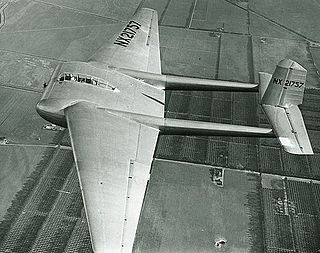
The XCG-16 was a military transport/assault glider ordered by the Army Air Force, from General Airborne Transport Co., for competition against the Waco CG-13A at Wright Field.

The ICA IS-29 was a sailplane built in Romania in the 1970s. The prefix IS comes from Iosif Șilimon, the Romanian IAR aeronautical engineer who designed it.
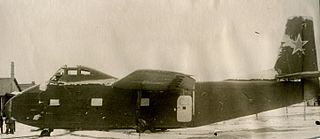
The Yakovlev Yak-14 was the largest assault glider ever to enter service with the Soviet Air Force. It was introduced in 1949, at a time when other air forces were abandoning the glider concept. In 1950 a Yak-14 became the first glider to fly over the North Pole.
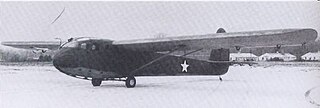
The Waco CG-3A was a US light troop military glider of World War II.

The Waco CG-4 was the most widely used American troop/cargo military glider of World War II. It was designated the CG-4A by the United States Army Air Forces, and named Hadrian in British military service.
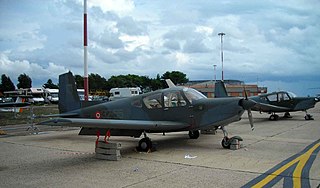
The SIAI-Marchetti S.205 is an Italian four-seat, single-engine, light airplane, manufactured by SIAI-Marchetti. The S.205 made its maiden flight in 1965. The Italian Air Force employs a version called S.208.

The Chase XCG-18A and YC-122 Avitruc was a military transport aircraft designed by Chase Aircraft and produced in limited numbers in the United States in the late 1940s, initially as a glider, but definitively in powered form. The design was based on the CG-14 cargo glider but was substantially larger and featured all-metal construction. It was a high-wing cantilever monoplane. The fuselage was of rectangular cross-section and featured a loading ramp at its rear. The main undercarriage units were carried at the sides of the fuselage and were fixed, while the nosewheel was retractable. In its powered form, two radial engines were fitted in nacelles in the wings.

The Douglas XCG-17 was an American assault glider, developed by the conversion of a C-47 Skytrain twin-engine transport during World War II. Although the XCG-17 was successfully tested, the requirement for such a large glider had passed, and no further examples of the type were built; one additional C-47, however, was converted in the field to glider configuration briefly during 1946 for evaluation, but was quickly reconverted to powered configuration.

The Waco CG-13 was an American military transport glider aircraft developed during World War II.
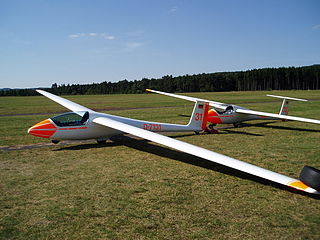
The Schleicher ASK 23 is a single-seat Club Class sailplane that was built by the German manufacturer Alexander Schleicher GmbH & Co.
The St. Louis CG-5 was a 1940s American prototype military transport glider designed and built by the St. Louis Aircraft Corporation.
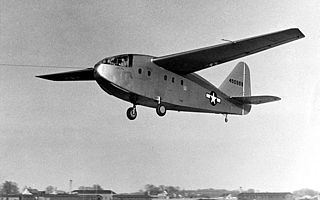
The Chase CG-14, also known as the G-14 or Model MS.1, was an assault glider manufactured by Chase Aircraft for the United States Army Air Forces during the Second World War. The aircraft failed to progress beyond the prototype stage, being overtaken by larger, improved glider designs.

The Glaser-Dirks DG-600 is a glider manufactured by Glaser-Dirks as a successor to the DG-202 and DG-400 series of gliders where carbon fiber reinforced plastics was used.
The Beatty-Johl BJ-2 Assegai was a single seat, high performance competition glider built in South Africa in the early 1960s. Only one was built; it was optimised for South African conditions and performed well there, winning two nationals and setting several records, but was less successful under European conditions at the 1965 World Gliding Championships.
The Bowlus CG-8 was a prototype Second World War American transport glider to be built for United States Army, one was built but the type did not enter production and the programme was cancelled.
The Bowlus CG-7 was a prototype Second World War American transport glider to be built for United States Army, one was built but the type did not enter production and the programme was cancelled.
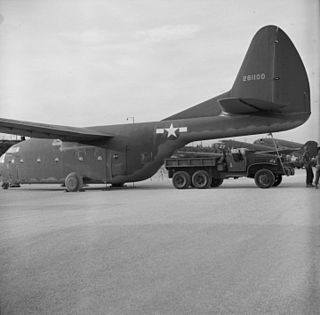
The Laister-Kauffman CG-10 was an American military transport glider aircraft developed during World War II.
The Douglas CG-19 was a late 1940s assault glider project conceived by the Douglas Aircraft Company.















